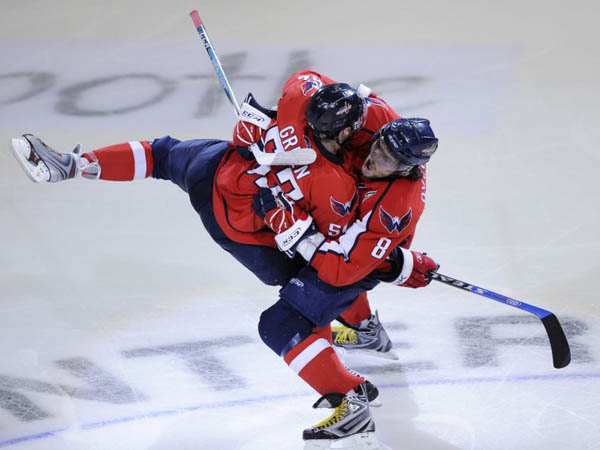
I grew up in a relatively academically demanding home, son of immigrant professionals (one a doctor and the other a rocket-scientist (not a joke) turned lawyer) who did not come from all that much and worked embarrassingly hard (especially in light of my future prayers at the Temple of Taking-It-Easy) to make it in the big show. To ensure their efforts wouldn’t be wasted on a pair of snot-nosed Americans, my brother and I were placed in bumptious private schools that probably cost a bit more than my parents’ disposable income should have allowed at the time but whose admission reserved a seat at the haves’ table later on. Though there were never really any explicit directives or threats as such, it was understood that treating school with anything less than flagellant seriousness was not really an option. That said, and I have often wondered why and how this was the case given this backdrop, I did not grow up reading literature outside of those half-assedly enforced school requirements. This was the case from an early age all the way through high-school and onto college. I mean, I knew how to read, but the 11-year old me didn’t see much point in doing so unless an evaluation of some sort was forthcoming (regular devouring of the LA Times Sports section notwithstanding). Possible explanations I’ve toyed with are that my parents’ science-math bent was somehow passed along – either genetically or culturally – to the detriment of right-brain matter, or that their leniency with regards to how we spent our time resulted in mammoth TV-addictions, or perhaps more cynically that reading for the sake of reading offered more personal development than any tangible, institutional advantage and was consequently not particularly advocated. Or perhaps it was just the interminable slogging through of
Ethan Frome and
The Prime of Miss Jean Brodie that turned me off to the written word for a finite period of time. In the end, it doesn’t really matter because I eventually realized that the twirly dance of words and commas and their playings was more my speed than the cold deciphering of numbers and symbols and their nap-time. Deciding, or more appropriately choosing not to make a decision, to go into a line of work in which reading and writing are foundational pillars only reinforced the idea that I best make up for lost time.
It wasn’t too long after I began to take up reading somewhat seriously that I befriended a colleague who shared with me some common interests and a similar landscape against which to view the arts and the world, but who unlike me had been historically rapacious in dealing with the printed word. A slow reading week for this guy would have been the most active month of my life (September 2005). In what was an appreciated yet unequal trade, he introduced me to such heights as Nabokov’s Pale Fire (from which this website’s byline originates) and received in turn the greater purse of my comedic charms and charismatic spillage, along with the presence of ladies (usually very attractive ones) that necessarily flowed. You’re welcome, dogg.
I soon noticed this fellow started carrying around a large book with him to work. This was not out of the ordinary in and of itself, neither was the tome’s textbook-like height or its Byzantine-sized print. When Bookwormy McReadsalot informed me that this was not the first time he was reading this boulder of a door stop, I thought, “strange but not too strange.” But when rather than accompany me on our usual “what are we doing in these jobs, pass the hot sauce” lunches that ease the pain of the work day, I was told that he preferred to eat alone and read his book, well, my cat-like curiosity, not to mention my crippling, dog-like insecurity, demanded to be sated.
The book turned out to be David Foster Wallace’s magnus opus
Infinite Jest, a 1,079-page, multi-narrative behemoth delving into the worlds of drug addition, tennis prepatory-academy instruction, Québécois separatism, film, pharmacology, consumerism, and our insatiable quest for entertainment. It is, quite simply, the greatest feat of individual human creativity that I am aware of.
The above claim makes up in foolishness what it lacks in understatement by the fact that I’ve actually only got through its first 200-pages or so. This post had been evolving in my head for over six-months. I stopped reading because the book is so densely packed with subtle conveyances and a writing style and structure so demanding (and consequently giving) that it would take me minutes upon minutes and multiple readings just to get the feeling that I had adequately explored the various content of even a single sentence (the sentences can be around a page in length and often so twistingly complex that they are both "neat"to read and re-read and get lost in, yet at the same time maddeningly frustrating to have to do so). But more than that I stopped reading at a specific scene, a father drunkenly retelling his son the story of the abrupt end of his own tennis career at age 13, “shoes filling with blood” following a race to the net and subsequent stumble. No need to provide an abstract of my much contemplated post (and often argued over with our friend, Bookwormy), but leave it to say a 13-year old cannot achieve a speed, starting at standstill and sprinting for only 30-feet, that would be anywhere near sufficient enough to leave stains of flesh, tissue, and bone on the court, fill his shoes with blood, and end a promising tennis career (And yes, I understand it was a literary device told by an exaggerating, bitter, out of touch father, to convey a certain point, but still…c'mon!). Sadly, the events of about 10-days ago obviated the need for that niggling post and required the current one instead.
David Foster Wallace hung himself in his home.Quite frankly, I am nowhere near a good enough a writer to appropriately convey just how impressive this book is. Wallace, a voracious reader of dictionaries and grammatical treatises, manipulates words and sentence structure with both technical mastery and maniacal perfervidity, in the way Mozart would have likely composed if someone had slipped him some DMT. Wallace bends the rules of writing as only those deeply versed in, and obsessively fanatical of, those rules can. The substantive depths and attention to detail – in feats ranging from providing the complete filmography of an optics engineer turned avant-garde filmmaker, to describing the specific rituals of a16-year old tennis prodigy hiding his weed fix from friends and instructors, to, more broadly, creating a world where years are referred to by their corporate sponsors and disabled, terrorist groups (disabled modifying “groups” and not “terrorists,” as in the Wheelchair Assassins, or Les Assassins en Fauteuils Roulants) wreak havoc – is stunning.
Wallace was the smartest guy in the room no matter where he stood. To say he was possessed by genius is to misfire on both accounts: his ability to convey and comment on the complexity of our existence and how we perceive it, with sincerity and without pandering or pretention, made other standard-bearer geniuses wildly jealous; yet he was tormented by a deep and profound depression, one so entrenched and commandeering that, it would seem, makes the genetic possession of a fatal disease seem more like a passing cold. Always at odds with his own success, even more so than most who do find themselves in the suddenly unenviable position of being successful, Wallace seemed to obsess over the quality of his own work and his relationship to it, perhaps mimicking the hold his internal demons had over him. It seems medication and even electroshock therapy were not enough to wrestle away control from his brilliant yet unappeasable mind. Though not enough, luckily for us he spilled enough truth on his pages and their footnotes to last a while. And now it’s through with him.


























